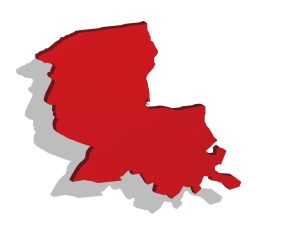Two-party system courts crisis in American politics
September 21, 2016
According to the most recent Real Clear Politics average, 54.9 percent of likely voters currently hold an unfavorable view of Hillary Clinton, while 57.3 percent hold unfavorable views of Donald Trump. If those numbers seem high, it’s because they are, in fact, they historically high. Clinton and Trump both top the charts as the most disliked major party candidates since candidate favorability ratings started being tracked. This points to a major crisis in the structure of American politics itself and the the need for restructuring.
Clinton has struggled mightily with reassembling the Obama coalition that won in 2008 and 2012. Many progressives flocked to Democratic-Socialist Senator Bernie Sanders in the Democratic primary, believing Clinton to be too cozy with Wall Street interests and generally regarding her as representative of a corrupt system they wanted to tear down.
The built-in advantages afforded to Clinton in the Democratic primary proved too much for Sanders to overcome in the end, and, though he has publicly endorsed Clinton, some of his supporters have been hesitant to back her.
Trump’s ascendancy in the Republican primaries on the backs of a significant minority of dedicated voters convinced that the entirety of the country’s problems can be explained by the issues of illegal immigration and bad trade deals has understandably turned off the majority of American voters. Trump’s insistence that a large number of Mexican immigrants are “rapists” was, oddly enough, not well-received among the general electorate, despite his caveat that “some,” he assumed, were “good people.”
Many of the Republican primary voters who supported Trump hardly did so for deeply ideological reasons. Rather, they were so frustrated by the perceived failures of their own traditional party elites during the Obama presidency that they wanted someone—anyone—who promised to burn down the system and start over.
Trump is, if nothing else, that man.
Instead of opting for what some reluctant Democratic and Republican voters see as the lesser of two evils, many disaffected voters are choosing to reject this choice entirely as being the only available option.
Most of these voters estranged from their own parties have flocked to either Libertarian Gary Johnson or Jill Stein of the Green Party.
Not since Green Party candidate Ralph Nader received 1.9 percent of the vote in Florida in 2000 and peeled enough voters away from Democrat Al Gore to hand the election to George W. Bush have third-party candidates been poised to play such a pivotal role in a presidential election.
In the latest national polls, Clinton currently holds a narrow lead at 41.4 percent, followed by Trump’s 40.3, Johnson’s 8.4, and Stein’s 3.1. Though she has consistently led the general election field so far, Clinton is losing ground in a number of key swing states and is far from a shoe-in to defeat Trump.
While Stein’s support only takes away from Clinton’s, it seems Johnson is having a net-neutral effect and may even be slightly helping Clinton, contrary to what was first expected.
Johnson’s campaign has had a rough week after it was announced that he will not be allowed to participate in the first presidential debate held on Sept. 26, effectively ending his chances of gaining anywhere near the 19 percent that Ross Perot’s independent candidacy earned in 1992. However, as we’ve seen with the case of Nader, third-party candidates hardly need to win a fifth of the popular vote to play the spoiler.
Regardless of the outcome in November, both major parties have some serious soul-searching to do going forward. To re-assimilate those who voted third-party this year, Republicans and Democrats will have to do a better job of representing the interests of their respective bases, which means moving away from a top-down approach to policy goals and focusing on issues that matter most to their own voters.









Leave a Comment